Teaching & Learning

Teaching & Learning
Stockton has achieved remarkable success in terms of student retention and graduation rates because of its personalized approach to teaching and learning.
Revolutionary War History Anchored at Marine Field Station
To some, the Bead Wreck anchor would have looked like 500 pounds of rust and years of work to make about 240 years of deterioration from brackish water disappear, but Stephen Nagiewicz saw something much different.
Nagiewicz, an avid diver and an adjunct instructor who teaches Marine Science at Stockton University, looked through the crumbling wrought iron and saw an artifact that could help the public remember local Revolutionary War history and an opportunity for his students to learn and share history with a hands-on restoration project.
On Oct. 6, 2020, exactly 242 years after the Battle of Chestnut Neck, Nagiewicz stood next to the fully restored anchor at its new resting place at the Stockton Marine Field Station in Port Republic and told its story and connection to the Bead Wreck.
"Ten naval ships and over 300 British marines and Loyalists came here to burn the town, which was supporting privateers. Boat captains, sailing ship captains and whale boat captains of the time had been issued a Letter of Marque and became privateers. They were authorized to steal from the British and give to George Washington, which they did, and they did it so well that the British were starting to see shortages of lumber, cloth and food because the Mullica River was the place it was all going to auction," he explained.
The Field Station is located along Nacote Creek, which feeds into the Mullica River. Using sonar technology, Nagiewicz, students and Field Station staff have discovered and mapped Revolutionary War shipwrecks that would have become forgotten history.
Taking Class Outside
Not all classrooms have ceilings. The sky is the limit in Stockton University's outdoor learning spaces that include a Sustainable Farm, the Atlantic City Boardwalk and ecosystems that stretch from the beach to the forest.
Galloway offers a breath of fresh forest air and subtle notes of birdsong, while Atlantic City offers a sea breeze and the sounds of waves crashing on the beach.
Faculty have taken advantage of the great outdoors at Stockton since it opened in 1971. The challenge of creating physically-distanced classroom spaces during the COVID-19 pandemic has inspired even more to take their lessons and their students outside.
See how the longtime tradition of outdoor learning has evolved into a new learning format during the pandemic.
Photos by Susan Allen '09, MA '14
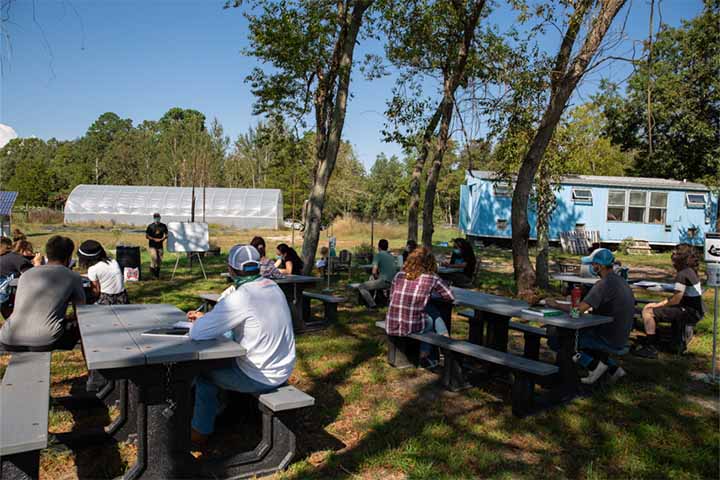
Students at Sustainable Farm
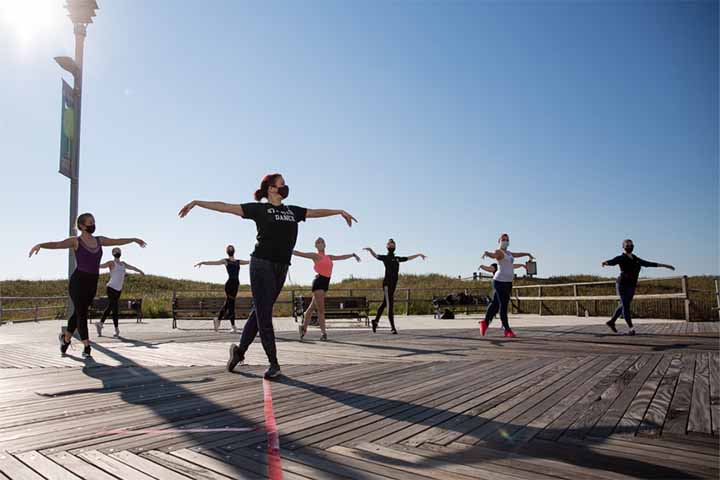
Dance on the Boardwalk
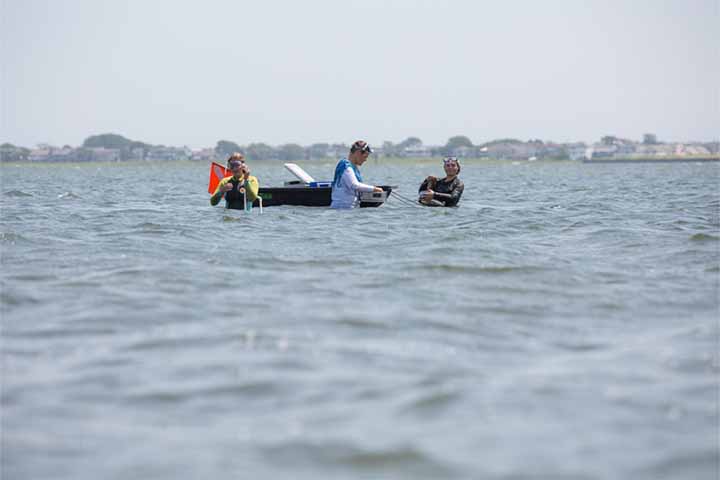
Sea Grass Research
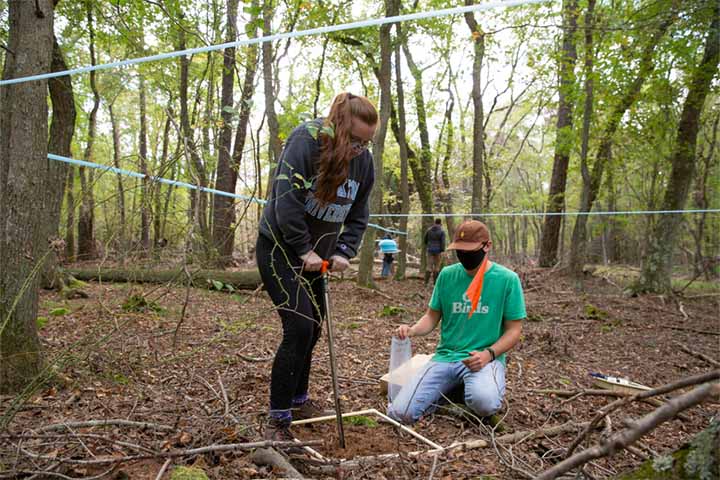
Maple Syrup
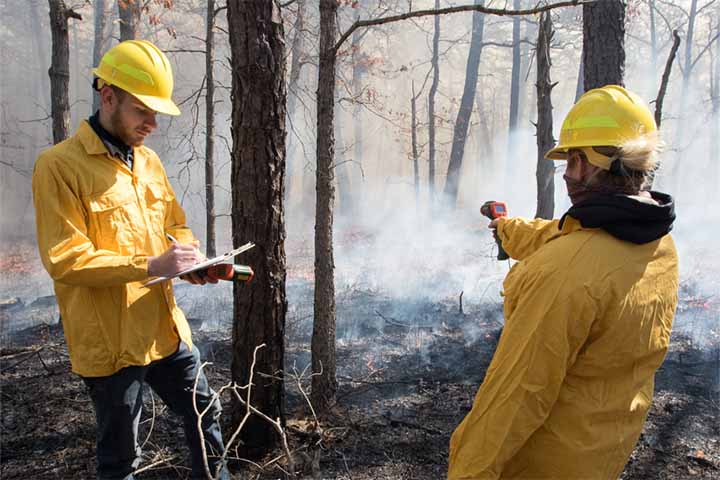
Controlled Burn
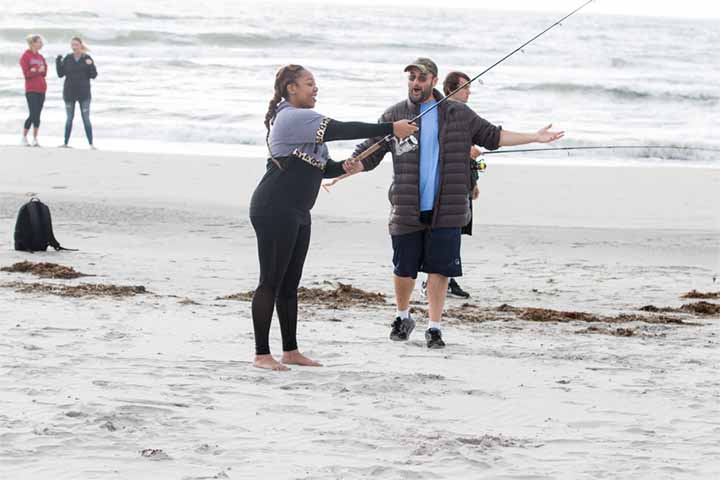
Saltwater Fishing at Stockton AC
Students Collaborate with Peers Around the World

What’s for breakfast?
It’s a simple enough question, but a much more complicated answer when the responses come from people living in different cultures and countries.
While some students may get the opportunity to study, and eat breakfast, abroad, Stockton’s Director of the Office of Global Engagement JY Zhou also looks for other ways to introduce and connect students to other cultures.
This year she has partnered Stockton classes with students in Mexico, Colombia, Egypt and New Zealand through Collaborative Online International Learning, or COIL.
“I’ve been doing COIL projects for a while,” Zhou said. “We’ve been looking for more ways to connect virtually, making international education more inclusive and introducing more students to other countries.”
Topics have included marijuana legalization, which was also being voted on in Mexico, cultural diversity, global education, and, yes, even breakfast.
Race & Racism Education Now Required for All Degrees
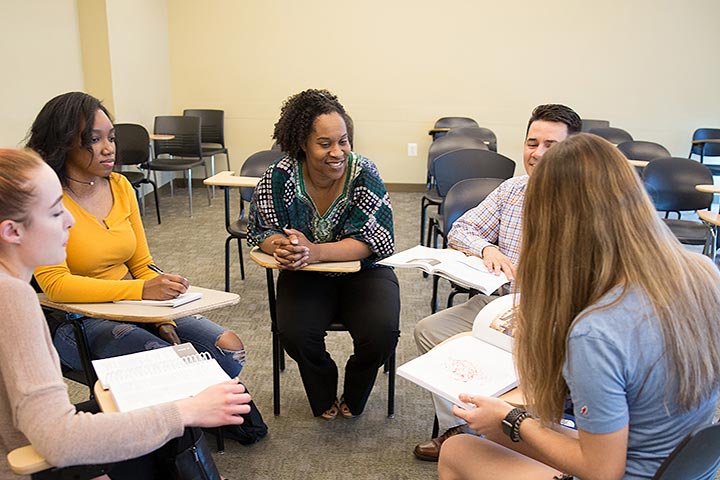
All incoming students beginning with the Fall 2021 semester will complete two courses focused on race and racism as the Stockton University Board of Trustees approved a resolution for the courses on May 6.
Donnetrice Allison, professor of Africana Studies and Communication Studies, coordinator of the Africana Studies program and Director of Strategic Initiatives proposed the requirement to ensure that all students, no matter what their major, will receive education in the history and impact of race and racism in America.
Allison said it is crucial that the courses reach every student.
“This can’t just be for students who want to major in the subject,” Allison said. “This is something everyone must understand if we are to eradicate racism and promote equity and diversity. You have to understand the history to support change.”
The R1 requirement would make race and racism the focus of the class. Examples include Race and Politics, The History of Black Education and A History of Black Protest and Civil Unrest.
The R2 requirement will incorporate race into another subject area, such as business, marketing, science or literature. About 25% of the class will include discussions on how race and racism are enacted within that subject area.
Stockton & Terrapins: A Perfect Match
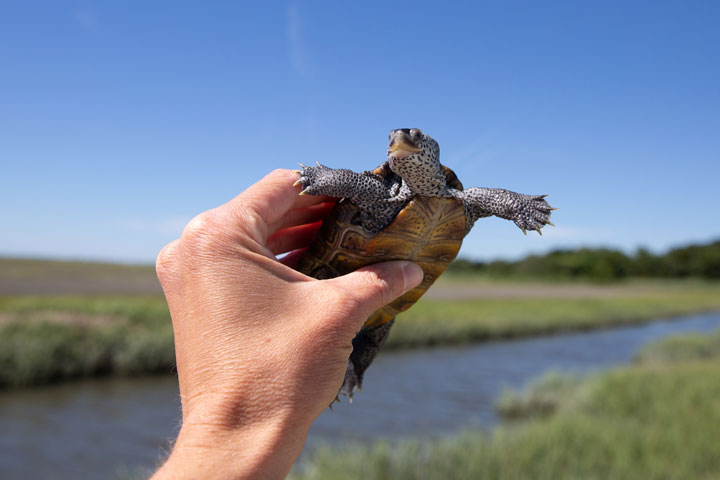
Lake Fred Turtles Help NJDEP Research Mysterious Shell Lesions
Some of Lake Fred’s turtles that can be spotted lounging on logs are helping scientists with a research study.
Last year, the New Jersey Department of Environmental Protection (NJDEP) became aware of northern redbelly turtles with mysterious shell lesions in the Delaware watershed. In Fall 2019, Craig Lind, assistant professor of Biology, and students began looking for answers to the cause of the irregular splotches that form on the plastron (underside of the shell).
Lind’s work is taking place on Lake Fred, which is serving as a control site for the study led by NJDEP with Stockton and Montclair State University researchers conducting fieldwork.
Northern redbelly turtles, the largest species of basking turtle in New Jersey, are regularly spotted balancing on logs in Lake Fred to soak up warmth from the sun in the spring and summer months.
The turtles on campus are healthy with no lesions reported, so Lind is working with Biology majors Greg Sousa and Matthew Mershon to gather baseline data that can be used to make comparisons between the turtles with and without shell lesions.
A Record Rescue
Enrollment in the Diamondback terrapin “head start” program at Stockton University’s vivarium soared during the pandemic with the help of community members.
The conservation effort is not new, but this year’s record rescue effort made headlines internationally and caught the attention of Jimmy Fallon who mentioned the terrapins on the Tonight Show after a Facebook post introduced their rescue to the world.
In April, Stockton received more than 1,000 hatchlings known as spring emergers, meaning that they hid from the winter temperatures underground in their nests and dug out when the weather warmed.
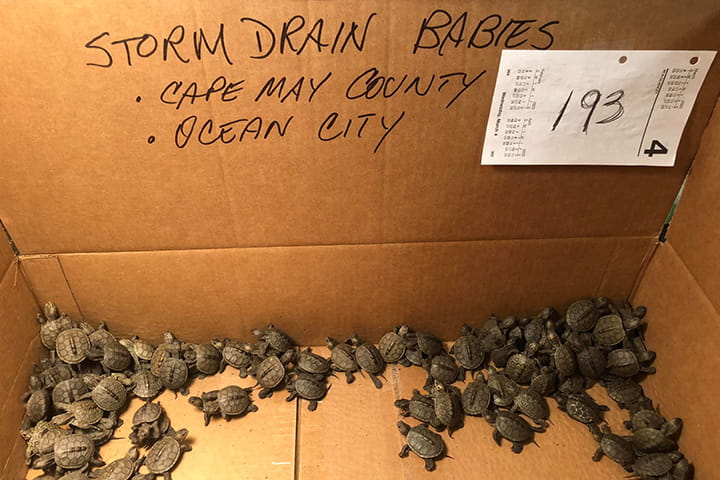
"Eggs laid later in the year hatch out underground and spend the winter in the nest chamber surviving off their yolk sac," said John Rokita, assistant supervisor of Academic Lab Services.
When the warmth of spring awakens the tiny terrapins, their perilous journey begins.
After surviving a treacherous traffic crossing, a baby terrapin can meet other obstacles like curbs and storm drains.
Terrapins in Ocean City and Ventnor are lucky to have dedicated volunteers who patrol roadways, make rescues and deliver them to Stockton.
The Stockton Foundation is currently raising funds to keep the hungry hatchlings growing quickly. Terrapin expenses include the tanks they live in, frozen smelt and silversides as well as pelleted food, hoses and salt to make their brackish environment, light bulbs and fixtures to keep them warm and other miscellaneous supplies.





